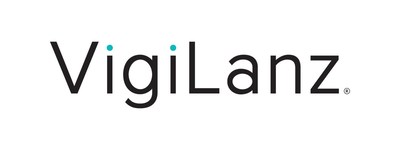VigiLanz Releases New Survey Findings on Hospital Safety

MINNEAPOLIS, May 19, 2020 /PRNewswire/ — VigiLanz, a clinical surveillance company, today announced findings from a new survey of 100 hospital and health system leaders on hospital safety challenges and improvements. With unintended harm occurring in one-third of hospital admissions,i and medical errors being the third leading cause of death after heart disease and cancer,ii the survey aimed to take stock of current hospital safety practices.
Conducted in February 2020 by Sage Growth Partners, a healthcare consultancy, the independent survey asked c-suite executives, physicians, nurses, infection preventionists, pharmacists, and more about their top patient safety challenges, where the most safety improvements are occurring, if technology is enhancing patient safety, and which patient-safety improvement approaches are most successful.
The full results were published in VigiLanz’s Hospital Safety Report 2020.
Key findings include:
Nearly one quarter of respondents are unhappy with their organization’s safety performance; more than a quarter say they are less confident about hospital safety than the typical consumer
- Twenty-one percent said they were very or moderately dissatisfied with their hospital’s safety performance in 2019. An equal amount reported being very satisfied; 58% said they were satisfied.
- About a quarter (29%) said they are less confident about hospital safety than the typical consumer; 43% said they are more confident, and 28% said they feel about the same as a typical consumer.
- More than one-third (39%) said communication errors play the biggest role in contributing to safety problems at hospitals; 30% said staffing/burnout. About a quarter (24%) cited disparate EHRs/poor interoperability/lack of actionable data at the point of care as the biggest safety issue; 2% said poor hand hygiene, and 5% said other.
Medication errors top hospitals’ safety challenges, but 40% of respondents say error rates are decreasing
- When asked to identify the top safety problems within hospitals, 28% percent of respondents selected medication errors.
- Other responses included hospital-acquired infections (HAIs) and hospital-acquired conditions (HACs) (26%), failure to report safety events in a timely manner (18%), antibiotic overuse/nonoptimal use (12%), falls (11%), opioid over-prescribing/misuse/abuse (3%), and other (2%).
- However, 40% said medication error rates have fallen at their hospitals in the past year; only 11% said they increased, and 49% said they stayed the same.
- Only 57% of respondents are receiving real-time alerts related to medication errors/potential errors.
- Twenty-nine percent reported reducing medication errors as their organization’s top safety improvement initiative for 2020.
- This was followed by reducing HAIs and HACs (26%), reducing falls, (18%), Ensuring the reporting of safety events in a timely manner (16%), reducing antibiotic overuse/nonoptimal use (7%), and reducing opioid over-prescribing/misuse/abuse (4%).
Hospitals are aware of the benefits of safety-enhancing technology, but 29% don’t use it
- Ninety-five percent say clinical surveillance solutions improve patient safety, but less than one-third (29%) use them.
- Those that reported their hospitals’ use of real-time alerts, like those provided by clinical surveillance solutions, were more likely to:
- Be very or extremely confident their organization could respond to a viral or disease outbreak immediately (86% vs. 75%)
- Report that sepsis mortality rates had fallen at their hospital in the last year (50% vs. 37%)
- Report that their process for identifying patients at risk for sepsis was very or extremely effective (61% vs. 48%)
- Report that medication error rates had fallen at their hospital in the past year (51% vs. 25%)
- Report that opioid prescribing rates had fallen at their hospital in the past year (83% vs. 72%)
One in five hospitals may not be able to respond to a viral outbreak quickly
- Twenty-one percent said they are only slightly confident or not at all confident that they could immediately respond to a viral outbreak, such as measles, as soon as a patient presents with symptoms. More than half (52%) said they are very confident and 27% reported extreme confidence.
- Only 36% of respondents are receiving real-time alerts related to viral and disease outbreaks.
“As the U.S. fights the COVID-19 pandemic, hospitals face new and unprecedented challenges to keep patients safe,” said VigiLanz Chairman and CEO David Goldsteen, MD. “We are already seeing increasing adoption of technology solutions to help manage medication scarcity and use, infection control challenges, and much more, specifically pertaining to COVID-19. Hospitals are recognizing that use of technology and real-time intelligence directly correlate with patient safety and outcomes. While technology is not the only lever hospitals should be using to improve safety, it is an essential and foundational element of success.”
Methodology
VigiLanz commissioned Sage Growth Partners, a healthcare consultancy, to conduct the independent survey of 100 hospital and health system leaders in February 2020. Respondent titles included chief executive officer (16%), chief medical officer (5%), chief nursing officer (11%), quality executive (8%), pharmacy executive (34%), infection prevention executive (23%), and other (3%). For more demographics and methodology, download the full report here.
About VigiLanz
Founded in 2001, VigiLanz (www.vigilanzcorp.com) is a privately held, rapidly growing provider of SaaS-based clinical surveillance solutions. The firm is focused on aggregating disparate EHR transactional workflow and documentation data across health systems to identify real-time clinical issues that avoid or minimize harm, optimize clinical outcomes and support preventive care. VigiLanz supports a large and growing community of hospital CMOs, CMIOs, CIOs, quality and safety teams, infectious disease and control specialists, pharmacists, and other clinicians dedicated to real-time inpatient and outpatient care.
i “Global Trigger Tool Shows That Adverse Events In Hospitals May Be Ten Times Greater Than Previously Measured,” Health Affairs: https://www.healthaffairs.org/doi/10.1377/hlthaff.2011.0190.
ii “Medical error—the third leading cause of death in the US,” BMJ 2016;353:i213: https://www.bmj.com/content/353/bmj.i2139.
Media Contact
Vanessa Ulrich
(410) 534.1161
vulrich@sage-growth.com
View original content to download multimedia:http://www.prnewswire.com/news-releases/vigilanz-releases-new-survey-findings-on-hospital-safety-301061684.html
SOURCE VigiLanz

